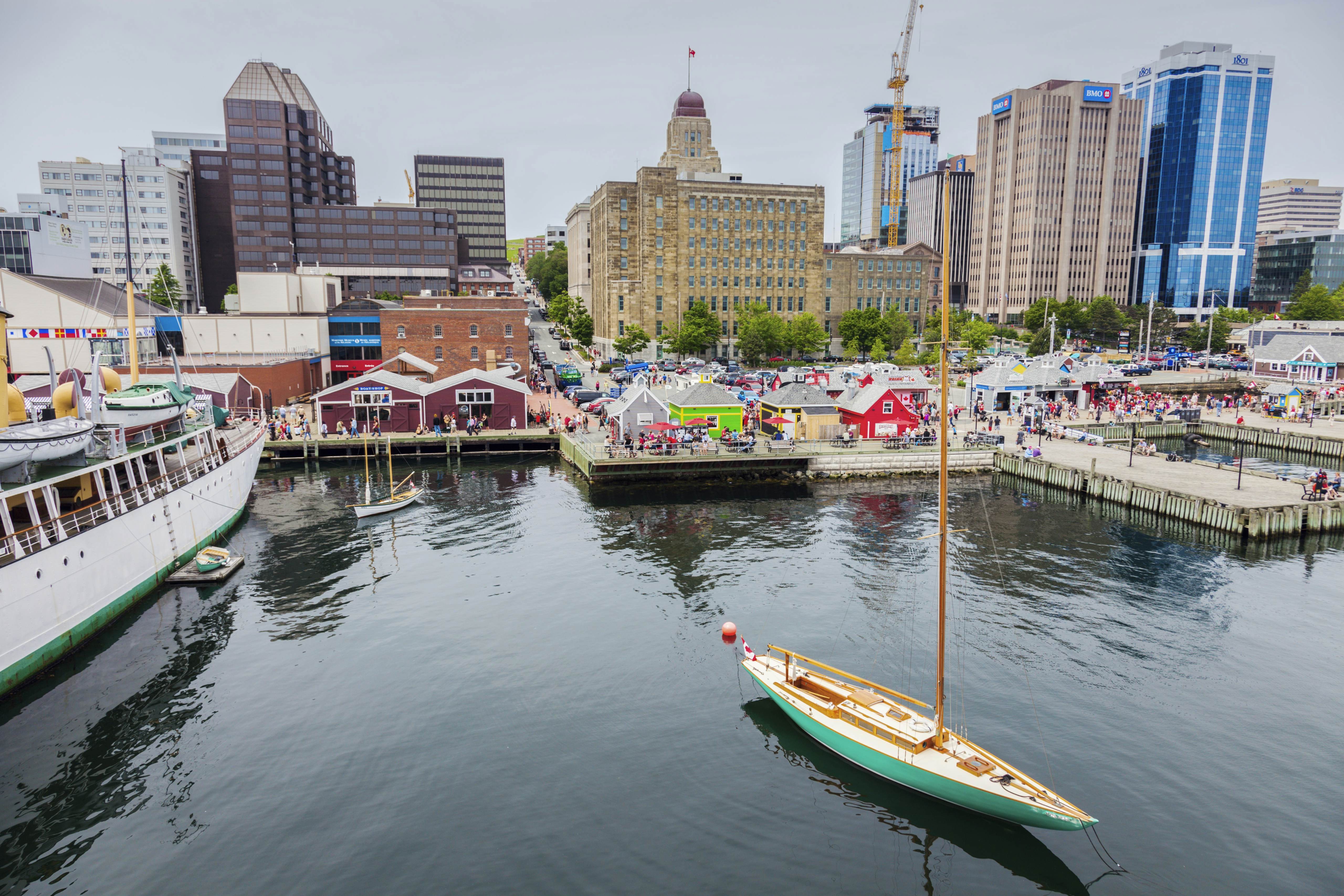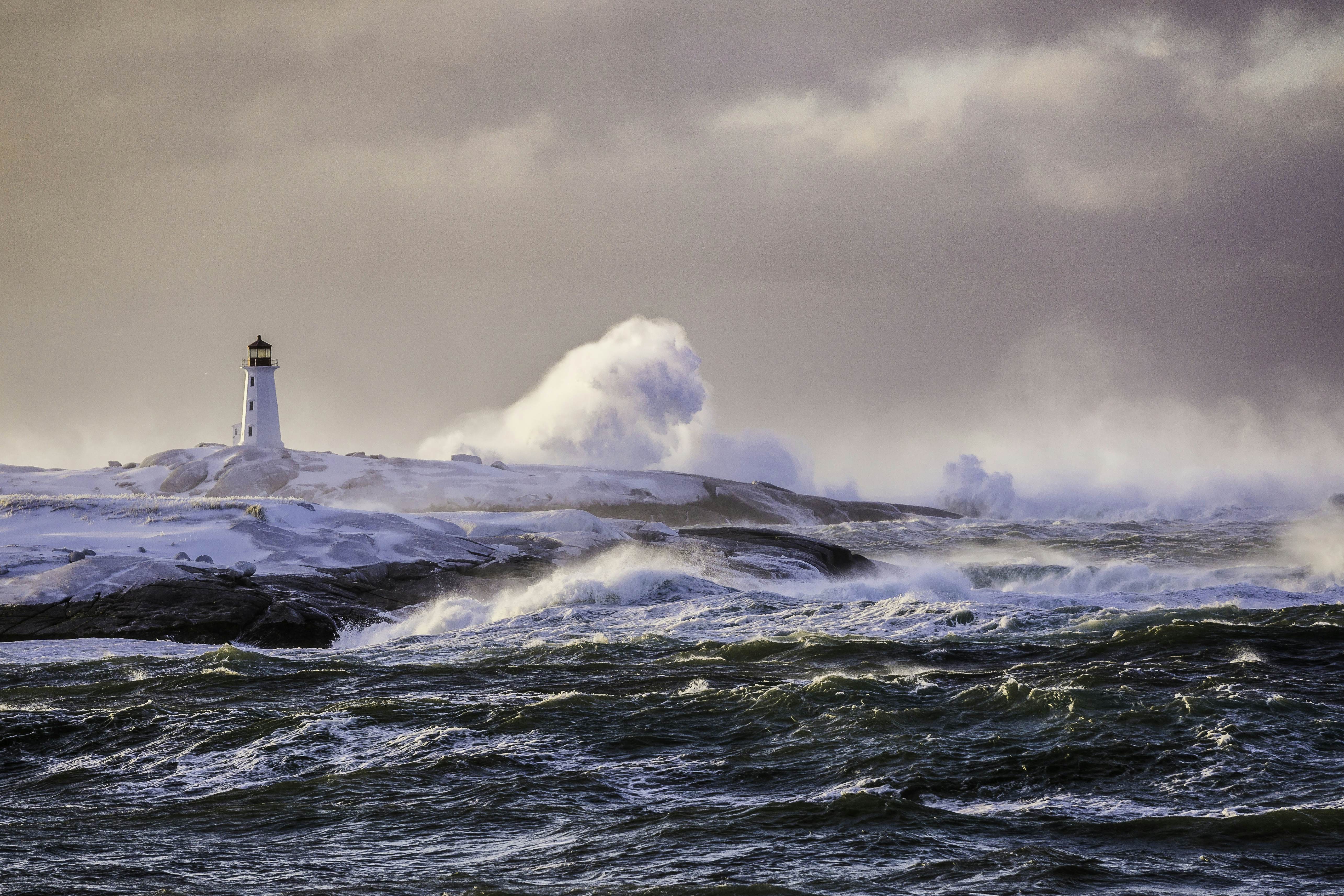Are US citizens planning a trip to Nova Scotia? Travels.edu.vn is your trusted resource for navigating travel requirements and discovering the best experiences. Explore this comprehensive guide for hassle-free travel to Nova Scotia, packed with travel tips, documentation necessities, and amazing places.
Unlock adventure with confidence.
1. Essential Travel Information for US Citizens Visiting Nova Scotia
Nova Scotia, with its captivating coastal scenery, vibrant culture, and welcoming atmosphere, is a popular destination for US citizens. Understanding the entry requirements, travel options, and local customs is essential for a smooth and enjoyable trip. This guide provides detailed information to help you plan your visit effectively.
2. Entry Requirements: What US Citizens Need to Know to Visit Nova Scotia
One of the first questions for any traveler is, “What documents do I need?” For US citizens, the answer is relatively straightforward.
2.1 Passport Requirements
- A valid US passport is mandatory for entry into Canada, including Nova Scotia. Your passport must be valid for the duration of your stay. Always check the expiration date before your trip to avoid any last-minute issues.
2.2 Visa Requirements
- For tourism purposes, US citizens typically do not require a visa for stays up to 180 days. However, if you plan to study, work, or immigrate, you will need the appropriate visa. Check the official Government of Canada website for specific visa requirements based on your purpose of visit.
2.3 Other Necessary Documents
- While not always required, it’s a good idea to carry proof of sufficient funds to cover your stay and a return ticket. These can help demonstrate your intention to leave Canada at the end of your authorized stay.
3. Navigating Travel Options to Nova Scotia
Getting to Nova Scotia from the US is convenient, with several travel options available to suit different preferences and budgets.
3.1 Flying to Nova Scotia
- Major Airports: Halifax Stanfield International Airport (YHZ) is the primary airport in Nova Scotia, offering numerous direct and connecting flights from major US cities. Other airports include Sydney Airport (YQY) on Cape Breton Island.
- Airlines: Air Canada, United, Delta, and WestJet are some of the airlines that operate flights between the US and Halifax.
- Flight Duration: A direct flight from New York to Halifax takes approximately 2 to 2.5 hours. From other cities like Chicago or Miami, flight times will vary depending on layovers.
- Booking Tips: Book your flights well in advance, especially during peak travel seasons, to secure the best prices. Consider flying mid-week (Tuesday or Wednesday) for potential savings.
- Estimated cost: $200 – $600 (Based on location and time of booking)
3.2 Driving to Nova Scotia
- Border Crossings: You can drive to Nova Scotia from the US through various border crossings in Maine, New Brunswick, and Quebec. The most common route is through New Brunswick.
- Driving Time: Driving from Boston to Halifax is approximately 14-16 hours, depending on traffic and border crossing times.
- Essential Documents: Ensure you have your passport, driver’s license, vehicle registration, and proof of insurance.
- Border Wait Times: Check border wait times online before you travel to avoid delays. Websites like the Canada Border Services Agency provide real-time updates.
3.3 Ferry Services
- The CAT Ferry: Operated by Bay Ferries, The CAT provides a seasonal ferry service between Bar Harbor, Maine, and Yarmouth, Nova Scotia. This is a convenient option if you prefer to bring your car and enjoy a scenic journey.
- Ferry Duration: The ferry ride takes approximately 3.5 hours.
- Booking: Reservations are highly recommended, especially during the summer months.
 Yacht docked in the harbor in Lunenburg, Nova Scotia
Yacht docked in the harbor in Lunenburg, Nova Scotia
Table: Comparison of Travel Options
| Travel Mode | Pros | Cons | Estimated Cost |
|---|---|---|---|
| Flying | Quickest option, direct flights available | Can be expensive, baggage fees, airport delays | $200 – $600 (flights), additional costs for baggage |
| Driving | Scenic route, flexibility to explore at your own pace | Long travel time, border crossing delays, fuel costs | Fuel costs, accommodation, potential tolls |
| Ferry | Bring your car, scenic coastal views | Seasonal, limited routes, can be affected by weather | $200 – $400 per person (plus vehicle fees) |
4. Must-See Attractions and Activities in Nova Scotia
Nova Scotia offers a wide array of attractions and activities to suit every interest. From historical sites to natural wonders, there’s something for everyone.
4.1 Halifax: A Blend of History and Modernity
- Halifax Waterfront: A vibrant area with shops, restaurants, and attractions like the Maritime Museum of the Atlantic.
- Citadel Hill National Historic Site: A 19th-century fortress offering panoramic views of the city and harbor.
- Public Gardens: Beautiful Victorian-era gardens perfect for a relaxing stroll.
- Art Gallery of Nova Scotia: Showcasing a diverse collection of Canadian and international art.
4.2 Peggy’s Cove: Picturesque Coastal Village
- Peggy’s Point Lighthouse: One of the most iconic lighthouses in Canada, set against a stunning backdrop of granite rocks and the Atlantic Ocean.
- Swissair 111 Memorial: A poignant memorial dedicated to the victims of the Swissair Flight 111 crash.
- Hiking Trails: Explore the rugged coastline on well-maintained hiking trails.
4.3 Cape Breton Island: Natural Beauty and Celtic Culture
- Cabot Trail: A world-renowned scenic drive that winds through stunning coastal landscapes, forests, and highlands.
- Cape Breton Highlands National Park: Offering hiking, camping, and wildlife viewing opportunities.
- Fortress of Louisbourg National Historic Site: A reconstructed 18th-century French fortress, bringing history to life.
4.4 Annapolis Valley: Wine Country and Historic Charm
- Grand-Pré National Historic Site: A UNESCO World Heritage Site commemorating the Acadian deportation.
- Wineries and Vineyards: Sample local wines at numerous wineries offering tours and tastings.
- Farmers’ Markets: Experience local produce and crafts at vibrant farmers’ markets.
4.5 Lunenburg: UNESCO World Heritage Town
- Old Town Lunenburg: A charming town with colorful buildings, historic architecture, and a bustling waterfront.
- Fisheries Museum of the Atlantic: Learn about Nova Scotia’s rich maritime history.
- Bluenose II: Visit the famous schooner, a replica of the original Bluenose, a Canadian icon.
 Waves crashing against rocks near the lighthouse at Peggy's Cove, Nova Scotia
Waves crashing against rocks near the lighthouse at Peggy's Cove, Nova Scotia
5. Accommodation Options for US Travelers
Finding the right accommodation is crucial for a comfortable stay. Nova Scotia offers a range of options to suit different budgets and preferences.
5.1 Hotels
- Halifax: The city boasts numerous hotels, from luxury establishments like the Muir Hotel and The Lord Nelson Hotel & Suites to more budget-friendly options.
- Rural Areas: In smaller towns and rural areas, you can find charming boutique hotels and inns.
5.2 Bed and Breakfasts (B&Bs)
- B&Bs offer a more personalized experience, often located in historic homes with comfortable rooms and delicious homemade breakfasts.
- Popular areas for B&Bs include Lunenburg, Annapolis Valley, and Cape Breton.
5.3 Vacation Rentals
- Websites like Airbnb and VRBO offer a wide selection of apartments, cottages, and houses for rent.
- Ideal for families or groups looking for more space and privacy.
5.4 Camping
- Nova Scotia has numerous campgrounds, both in national parks and private facilities.
- Reservations are recommended, especially during the summer months.
6. Understanding Local Customs and Etiquette
Respecting local customs and etiquette can enhance your travel experience and create positive interactions.
6.1 Language
- English is widely spoken throughout Nova Scotia.
- In some Acadian communities, French is the primary language. Learning a few basic French phrases can be appreciated.
6.2 Tipping
- Tipping is customary in Nova Scotia.
- The standard tip for restaurant service is 15-20% of the pre-tax bill.
- Tip for other services like taxi drivers, hairdressers, and tour guides is also appreciated.
6.3 General Etiquette
- Nova Scotians are known for their friendliness and hospitality.
- Politeness and courtesy are highly valued.
- When visiting someone’s home, it’s customary to bring a small gift.
7. Staying Safe and Healthy in Nova Scotia
Nova Scotia is generally a safe place to travel, but it’s always wise to take precautions to protect your health and safety.
7.1 Health Insurance
- Ensure you have adequate travel health insurance to cover any medical expenses.
- Check with your insurance provider to understand what is covered and if you need to purchase additional coverage.
7.2 Emergency Services
- In case of an emergency, dial 911 for police, fire, or ambulance services.
- Medical facilities are readily available in major cities and towns.
7.3 Safety Tips
- Be aware of your surroundings, especially in crowded areas.
- Keep valuables secure and avoid displaying expensive jewelry or electronics.
- When hiking, stay on marked trails and be prepared for changing weather conditions.
- Be cautious of coastal waves, which can be unpredictable and dangerous.
8. Budgeting Your Trip to Nova Scotia
Planning a budget is essential to ensure you can enjoy your trip without financial stress.
8.1 Accommodation
- Budget: $80 – $120 per night (motels, basic hotels)
- Mid-Range: $150 – $250 per night (comfortable hotels, B&Bs)
- Luxury: $300+ per night (high-end hotels, resorts)
8.2 Food
- Budget: $30 – $50 per day (casual dining, self-catering)
- Mid-Range: $60 – $100 per day (restaurants, cafes)
- Luxury: $120+ per day (fine dining)
8.3 Transportation
- Rental Car: $50 – $80 per day
- Public Transportation: $2.75 per ride (Halifax Metro Transit)
- Ferry: Varies depending on route and season
8.4 Activities and Attractions
- Free: Hiking trails, beaches, public gardens
- Paid: Museums, historical sites, tours (expect to pay $20 – $50 per activity)
Table: Sample Daily Budget
| Category | Budget | Mid-Range | Luxury |
|---|---|---|---|
| Accommodation | $100 | $200 | $350 |
| Food | $40 | $80 | $150 |
| Transportation | $30 | $60 | $100 |
| Activities | $20 | $40 | $80 |
| Total | $190 | $380 | $680 |
9. Travel Tips for a Memorable Trip
Here are some additional tips to enhance your experience in Nova Scotia:
9.1 Best Time to Visit
- Summer (June-August): Warmest weather, ideal for outdoor activities, but also the busiest and most expensive time.
- Fall (September-October): Pleasant temperatures, stunning foliage, fewer crowds.
- Spring (April-May): Mild weather, blooming flowers, good deals on accommodation.
9.2 What to Pack
- Layers of clothing to accommodate changing weather conditions.
- Waterproof jacket and comfortable walking shoes.
- Sunscreen, hat, and sunglasses for sun protection.
- Insect repellent for outdoor activities.
9.3 Local Transportation
- Renting a car is highly recommended for exploring rural areas and scenic routes like the Cabot Trail.
- Halifax has an efficient public transportation system.
- Taxi and ride-sharing services are available in major cities.
9.4 Stay Connected
- Wi-Fi is widely available in cafes, restaurants, and hotels.
- Consider purchasing a local SIM card for cheaper data and calls.
10. Booking Your Nova Scotia Adventure with TRAVELS.EDU.VN
Planning a trip can be overwhelming. Let TRAVELS.EDU.VN take the stress out of your Nova Scotia vacation with our tailored travel packages.
10.1 Why Choose TRAVELS.EDU.VN?
- Expertise: We specialize in crafting personalized travel experiences that cater to your unique interests and preferences.
- Convenience: From flights and accommodations to tours and activities, we handle all the details, so you can relax and enjoy your trip.
- Value: We offer competitive pricing and exclusive deals to ensure you get the best value for your money.
- Support: Our dedicated support team is available to assist you before, during, and after your trip.
10.2 Our Services
- Custom Itineraries: We create custom itineraries based on your interests, budget, and travel style.
- Accommodation Booking: We offer a wide selection of hotels, B&Bs, and vacation rentals to suit every need.
- Tour and Activity Reservations: We book tours, excursions, and activities to help you experience the best of Nova Scotia.
- Transportation Arrangements: We arrange rental cars, airport transfers, and other transportation services.
 Colorful homes in Lunenburg, Nova Scotia
Colorful homes in Lunenburg, Nova Scotia
10.3 Contact Us
Ready to start planning your dream vacation to Nova Scotia? Contact us today for a free consultation:
- Address: 123 Main St, Napa, CA 94559, United States
- WhatsApp: +1 (707) 257-5400
- Website: TRAVELS.EDU.VN
Let travels.edu.vn help you create unforgettable memories in Nova Scotia. Our team is eager to tailor your dream vacation, ensuring every detail aligns with your desires for a seamless and enriching experience. Contact us now to begin crafting your personalized adventure.
FAQ: Traveling to Nova Scotia as a US Citizen
1. Do US citizens need a passport to enter Nova Scotia?
Yes, a valid US passport is required for all US citizens entering Canada, including Nova Scotia.
2. Do US citizens need a visa to visit Nova Scotia for tourism?
No, US citizens typically do not need a visa for tourism purposes for stays up to 180 days.
3. What is the best time to visit Nova Scotia?
Summer (June-August) offers the warmest weather, but fall (September-October) is also beautiful with fewer crowds.
4. How can I get to Nova Scotia from the US?
You can fly directly to Halifax, drive through border crossings in Maine, New Brunswick, or Quebec, or take The CAT ferry from Bar Harbor, Maine.
5. Is it safe to drink tap water in Nova Scotia?
Yes, tap water is safe to drink in Nova Scotia.
6. What is the currency used in Nova Scotia?
The currency is the Canadian Dollar (CAD).
7. What should I pack for a trip to Nova Scotia?
Pack layers of clothing, a waterproof jacket, comfortable walking shoes, and sunscreen.
8. Is tipping customary in Nova Scotia?
Yes, tipping is customary, with 15-20% being the standard tip for restaurant service.
9. Are credit cards widely accepted in Nova Scotia?
Yes, most businesses accept credit cards, but it’s a good idea to carry some cash for smaller establishments and farmers’ markets.
10. What emergency number should I call in Nova Scotia?
Dial 911 for police, fire, or ambulance services in case of an emergency.